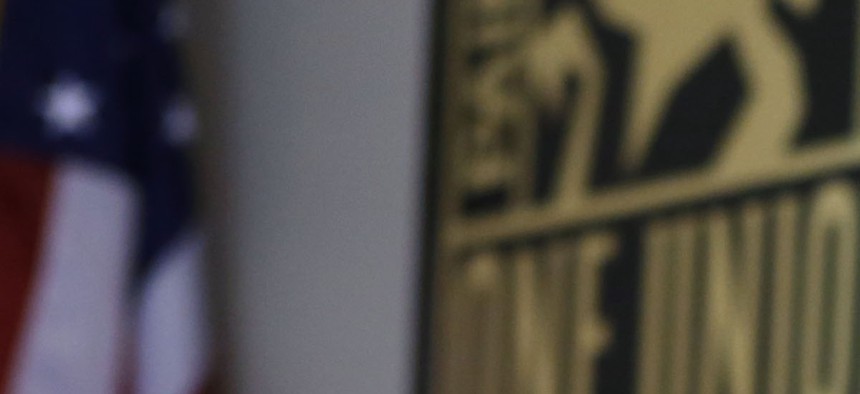
Jeffrey David Cox, Sr., the president of the American Federation of Government Employees, speaks to union members at an event in 2012. Bizuayehu Tesfaye/AP Images for American Federation of Government Employees
Are Unions the Big Problem at VA?
Two-thirds of the VA workforce is unionized and critics say too many of them spend their time on union organizing. By Charles S. Clark
Of all possible causes of the Veterans Affairs Department’s front-page woes -- corrupt managers, funding shortfalls, an exploding population of veterans, a poor communications culture -- there is one that has drawn perhaps the least attention.
Too many highly paid VA employees spend their time on union organizing, some say. On May 29, Kimberley Strassel devoted her regular column in The Wall Street Journal to an essay titled “Big Labor’s VA Choke Hold: How Democrats put their union allies before the well-being of veterans.”
Stating that two-thirds of the VA workforce is unionized, she said, “That's a whopping 200,000 union members, represented by the likes of the American Federation of Government Employees and the Service Employees International Union. And this is government-run health care -- something unions know a lot about from organizing health workers in the private sector.”
After jabbing the Obama administration for currying favor with unions, Strassel quotes Manhattan Institute scholar Diana Furchtgott-Roth’s reading of numbers acquired under the Freedom of Information Act from the Office of Personnel Management. The department, the scholar determined, in 2012 paid 258 employees “to be 100 percent ‘full-time,’ receiving full pay and benefits to doonly union work. Seventeen had six-figure salaries, up to $132,000.” OPM, her summary said, calculated that VA paid for 988,000 hours of "official" time in fiscal 2011, a 23 percent increase increase from 2010.
Asked for a response, J. David Cox Sr., national president of the American Federation of Government Employees, said in an email,“Federal unions are not the reason why the Department of Veterans Affairs is facing a crisis over providing healthcare to our nation’s war heroes.”
“In fact, we wouldn’t even know these problems existed if it wasn’t for frontline employees and their union representatives stepping forward to blow the whistle -- and facing serious intimidation and retaliation as a result,” he wrote.
What Strassel and other critics of labor unions fail to realize, or refuse to acknowledge, he continued, “is that we fight not just for our employees but for the wellbeing of the men and women they serve. AFGE unionized employees have been speaking out for years about the management and performance failings that have only now entered the public’s consciousness.”
Max Stier, president and CEO of the nonprofit Partnership for Public Service, told Government Executive he has a hard time believing the amount of union official time at VA is significant.





